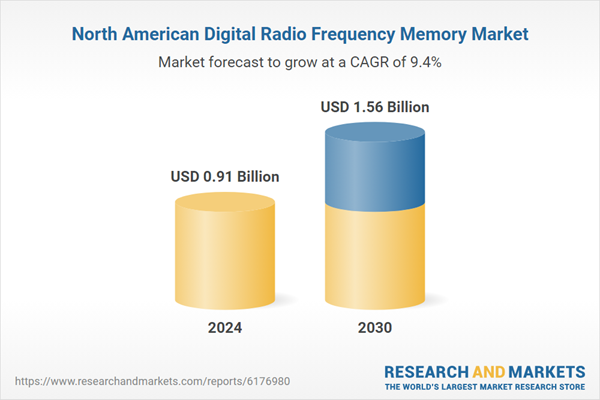Speak directly to the analyst to clarify any post sales queries you may have.
10% Free customizationThis report comes with 10% free customization, enabling you to add data that meets your specific business needs.
Market Drivers
Rising Demand for Electronic Warfare Capabilities
The growing need for advanced electronic warfare (EW) solutions is a major driver of the DRFM market. Military and defense organizations are increasingly investing in systems capable of detecting, deceiving, and jamming enemy radar and communication networks. DRFM technology enables precise replication and manipulation of radar signals, which enhances the effectiveness of electronic countermeasures in modern combat environments. As threats become more sophisticated, including the rise of smart missiles and radar-guided weapons, defense forces require high-fidelity DRFM solutions to protect critical assets and maintain operational superiority.The technology’s ability to reduce radar detectability, support deception strategies, and provide rapid adaptive responses makes it a key enabler for EW platforms. Integration with unmanned systems further expands DRFM applications, allowing remote deployment of electronic countermeasures while reducing risks to personnel. For instance, U.S. Navy plans to order up to 6,000 Active Expendable Decoys for F-35 and F/A-18 aircraft between FY2027 and FY2031 to enhance protection against radar-guided threats. Based on DRFM jamming technology, the compact decoys measure 2x1x8 inches and are launched from standard dispensers, with production starting at 300 units per month and an initial annual procurement of 3,000 units.
Key Market Challenges
High Development and Deployment Costs
The high cost of developing, testing, and deploying DRFM systems poses a significant challenge. Cutting-edge DRFM technology requires advanced memory modules, high-speed processors, and sophisticated software algorithms, all of which increase system costs. Integrating DRFM into existing platforms often necessitates modifications to hardware and software architectures, further raising expenses. Defense budgets must balance investment in DRFM with other critical programs, making cost-effectiveness a key consideration. The expense of training personnel to operate, maintain, and update these systems adds to the total lifecycle cost, creating barriers to widespread adoption.Key Market Trends
Miniaturization and Modular Designs
DRFM systems are trending toward smaller, lighter, and more modular designs to enable deployment across diverse platforms. Miniaturized DRFM modules reduce weight and power requirements, making them suitable for aircraft, unmanned vehicles, and compact naval systems. Modular architectures allow for easy upgrades, customization, and rapid replacement of components, extending system lifecycles and enhancing operational flexibility. Compact designs also facilitate integration with multiple sensors and electronic warfare subsystems without compromising platform performance. These trends support multifunctional capabilities, allowing a single DRFM unit to perform deception, jamming, and signal replication across various frequency bands. Advances in packaging, thermal management, and component efficiency are driving this evolution, creating highly adaptable solutions that meet the demands of modern missions.Key Market Players
- Airbus Group
- Northrop Grumman Corporation
- Raytheon Company
- Bae Systems PLC
- Elbit Systems Ltd.
- Thales Group
- Leonardo S.P.A
- Curtiss-Wright Corporation
- Israel Aerospace Industries
- Rohde & Schwarz
Report Scope:
In this report, North America Digital Radio Frequency Memory Market has been segmented into the following categories, in addition to the industry trends which have also been detailed below:North America Digital Radio Frequency Memory Market, By Architecture:
- Processor
- Modulator
- Convertor
- Memory
- Others
North America Digital Radio Frequency Memory Market, By Application:
- Electronic Warfare
- Radar Test & Evaluation
- Electronic Warfare Training
- Radio & Cellular Network Jamming
North America Digital Radio Frequency Memory Market, By Platform:
- Defense
- Commercial & Civil
North America Digital Radio Frequency Memory Market, By Country:
- United States
- Canada
- Mexico
Competitive Landscape
Company Profiles: Detailed analysis of the major companies present in North America Digital Radio Frequency Memory Market.Available Customizations:
With the given market data, the publisher offers customizations according to the company’s specific needs. The following customization options are available for the report.Company Information
- Detailed analysis and profiling of additional market players (up to five).
This product will be delivered within 1-3 business days.
Table of Contents
Companies Mentioned
- Airbus Group
- Northrop Grumman Corporation
- Raytheon Company
- Bae Systems PLC
- Elbit Systems Ltd.
- Thales Group
- Leonardo S.P.A
- Curtiss-Wright Corporation
- Israel Aerospace Industries
- Rohde & Schwarz.
Table Information
| Report Attribute | Details |
|---|---|
| No. of Pages | 135 |
| Published | September 2025 |
| Forecast Period | 2024 - 2030 |
| Estimated Market Value ( USD | $ 0.91 Billion |
| Forecasted Market Value ( USD | $ 1.56 Billion |
| Compound Annual Growth Rate | 9.4% |
| Regions Covered | North America |
| No. of Companies Mentioned | 10 |









